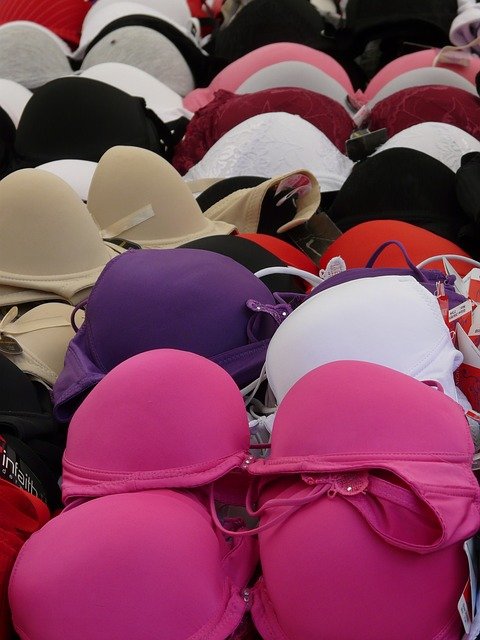By Tim Lambert
Early Underwear
The ancient Egyptians sometimes wore loincloths. The Romans also wore underwear. Both Roman men and women wore a loincloth or shorts called a subligaculum. Women also wore a band of cloth or leather around their chest called a strophium.
During the Middle Ages, men wore linen shorts called braies, but women did not normally wear knickers until the 19th century. Their only underwear was a long linen garment called a shift, which they wore under their dress. From the 16th century, women wore corsets made with whalebone.
19th Century Underwear
In the 19th century, underwear became much more elaborate.
The word pants is derived from a character in an Italian comedy called Pantalone. He wore garments that came down to his ankles (when most men wore ones that came to the knee). In 18th century England, they were called pantaloons. In the 19th century, the word became shortened to pants. In Britain, pants came to mean long drawers that covered the whole leg. The garments worn over them became known as trousers.
The word drawers was invented because underwear was drawn on (in the same way we say ‘draw the curtains’). Where does the word knickers come from? It comes from a novel called History of New York by Diedrich Knickerbocker, supposedly a Dutchman living in New York (it was written by Washington Irving). In Britain, the illustrations for the book showed a Dutchman wearing long, loose-fitting garments on his lower body. When men wore loose trousers for a sport, they were sometimes called knickerbockers. However, women’s underwear was soon called knickerbockers, too. In the late 19th century, the word was shortened to knickers. In the USA, women’s underwear is called panties, which is a diminutive of pants.
At the beginning of the 1800s, women wore a long nightie-like garment under their dress, but it was now called a chemise, not a shift. However, after about 1800, they also wore drawers. Sometimes they came below the knee, or sometimes they were longer garments with frills at the bottom called pantalettes. However, in the late 19th century, only girls, not women, wore pantalettes.
Today we still say a pair of knickers or panties. That is because in the early 19th century, women’s underwear consisted of two separate legs joined at the waist. They really were a ‘pair’.
At first, women’s drawers were usually very plain, but in the late 19th century, they were decorated with lace and bands. In the Winter, women often wore woolen knickers and woolen vests.
Victorian women’s underwear was sometimes called bloomers. Elizabeth Miller invented loose trousers for women. Amelia Bloomer promoted the idea in 1849, and they became known as bloomers. In time, long underwear also became known as bloomers.
By the late 19th century in Britain, men’s underwear was called pants. Men also wore vests. Some men wore combinations of pants and vests in one garment.
Long Johns were first made for women. They were patented in 1868 by a man named Gideon W. Dorsey. At first, they were called union suits. In 1875, Susan Taylor Converse introduced an improved version. She called it an emancipation suit because it was supposed to emancipate women from corsets. But long johns soon proved to be popular with men as well. They became known as long johns, but nobody is sure why.
20th Century Underwear
In the 19th century, women’s underwear was usually open between the legs, but in the 20th century, closed knickers replaced them.
Meanwhile, in 1913, Mary Phelps Jacob invented the modern bra. She used two handkerchiefs joined by a ribbon.

In the 19th century, knickers came down to well below the knee. In the 1920s, they became shorter. They ended above the knee. By the 1940s and 1950s, many women wore briefs. In the 1970s, knickers became briefer still. In the 1990s, thongs became popular.
Men’s underwear also became shorter. The word drawers went out of use, and they became known as underpants or pants. Y-fronts went on sale in the USA in 1935. They went on sale in Britain in 1938. Boxer shorts were invented in the USA in 1925. They became popular in the 1940s.
National Underwear Day is 5 August.
Last revised 2025